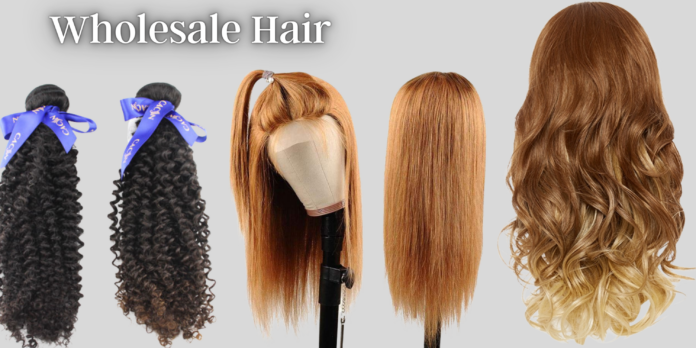Many women would rarely consider wearing a wig. The main reason for this is that their first experience with wigs was probably tales of ghoulish characters or jokes about tacky old ladies – not exactly the most inspiring image! However, hair wigs are no longer associated with any extremes these days.
They have become more accessible and acceptable. Despite this, many people still find it difficult to understand why someone would want to wear one.
When you’re looking for wholesale hair, it’s essential to keep in mind the hidden agenda of the supplier. Many suppliers are in the business of making a profit, and they may not always have your best interests at heart. Here are a few things to watch out for:
- Suppliers who sell low-quality hair. Cheap hair is often low-quality, and it can damage your hair and scalp. Make sure you only buy from suppliers who sell high-quality hair.
- Suppliers who try to push products on you. A good supplier will let you take your time to decide, and they won’t pressure you into buying products you don’t need.
- Suppliers who don’t offer you instructions for caring for the hair. Suitable wholesale hair suppliers will give you instructions on properly caring for the hair. They may also include some free samples of essential products that you can use with your new hair.
1) Hair Wigs are Alive
It’s true – natural human hair can last up to 5 years when cared for properly. It is also quite common for the same person to own several classic units at once since human hair can usually last up to 7 years.
2) Hair Wigs are Expensive
Although initially, you may think that hair wigs are cheap because they are disposable – the opposite is true. Natural human hair is collected from donors after at least two haircuts, but usually, more since it needs to be long enough to fit into a ponytail. Then this hair is carefully matched up and threaded onto Swiss lace for optimal wearing comfort. Afterwards, everything is sewn together by skilled technicians.
3) The German Strictness Stereotype
Did you know that Germany has stringent laws about making wigs out of natural human hair? To ensure the highest quality for their clients, wig makers must adhere to definite rules. These include: allowing for a maximum of 4% variance in colour and requiring that the hair be at least 40cm long!
4) The Hair is Straightened or Curled
Just because wigs are made from human hair does not mean every wearer will want it straight. Many wearers often curl or flat iron their wigs to achieve a look more similar to their natural hair. However, doing this too much can result in damage to the lace front – which is why most women choose to wear a silk scarf as opposed to any band when setting their wig down for the night.
5) High-End Wig Makers only use Real Human Hair
Typically, the more expensive a wig is, the higher the human hair used to make it. This is because cheap synthetic wigs use plastic fibres, which look unrealistic and can become particularly shiny over time. Human hair does not shine in this way since it contains melanin – a pigment that gives colour to the strand. By contrast, cheap synthetic wigs will have lost their initial colour long before they even reach you!
6) You must Be Patient when Wearing a New Wig
It takes about 1-2 weeks for your scalp to adjust after switching from wearing one wig to another or adding extensions. While wearers may feel an itching sensation during this adjustment period, there should not be any adverse effects if the wearer continues changing daily.
7) Not All Hair is Created Equal
Did you know that wigs made from Brazilian hair are considered the finest quality? This is because it contains all three layers of cuticle cells, making it more water-resistant than other textures. Meanwhile, European hair tends to have a looser wave pattern since no harsh chemicals are applied to straighten it during processing. On the other hand, Asian hair has an even tighter wave pattern – making it ideal for certain styles where curling is desired. African hair seems to fall in between these two extremes generally.









